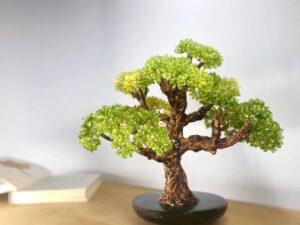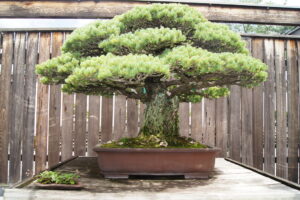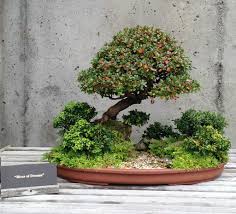Bonsai – the ancient art of cultivating miniature trees – is a captivating practice that has the power to transform any living space into a serene oasis. Mastering the art of bonsai requires patience, dedication, and a deep understanding of the delicate balance between nature and human intervention.
Through careful pruning, shaping, and meticulous care, bonsai artists are able to create living works of art that evoke a sense of timelessness and tranquility. Whether you’re a seasoned green thumb or a complete novice, the journey of bonsai cultivation can be a deeply rewarding one, offering a unique opportunity to connect with the natural world in a profoundly personal way.
By incorporating bonsai into your living or workspace, you’ll not only elevate the aesthetic appeal of your surroundings but also cultivate a sense of mindfulness and inner peace. So why not embark on the captivating adventure of bonsai mastery and unlock the transformative power of these living sculptures?

The Art of Bonsai: Cultivating Miniature Masterpieces
Bonsai, the ancient Japanese art of cultivating miniature trees, is a captivating and intricate practice that has captivated gardeners and enthusiasts worldwide. At its core, bonsai is not merely the act of growing small trees, but a profound exploration of nature, patience, and the delicate balance between human intervention and natural harmony.
Through the careful pruning, shaping, and training of these diminutive specimens, bonsai artists unlock the true essence of their subjects, revealing the beauty and character that lies within. Each bonsai tree is a living, breathing work of art, a testament to the skill and dedication of the individual who has nurtured it from a humble seedling to a magnificent, scaled-down representation of its full-sized counterpart.
Mastering the art of bonsai requires a deep understanding of horticulture, an eye for aesthetic design, and a reverence for the natural world. It is a journey of discovery, where the gardener learns to work in harmony with the plant, guiding its growth and shaping its form without ever truly controlling it. This delicate balance is what makes bonsai such a captivating and rewarding pursuit, one that has the power to transport us to the serene landscapes of ancient Japan and inspire a newfound appreciation for the beauty of nature in its most intricate and miniaturized form.

Originating in ancient China and later refined by the Japanese, bonsai cultivation has evolved into a revered art form admired worldwide for its elegance and symbolism. In this blog post, we will explore the timeless practice of bonsai cultivation and delve into the techniques and principles behind mastering the art of bonsai.
Understanding Bonsai: At its essence, bonsai is the art of growing and shaping trees in containers to mimic the appearance of mature, full-sized trees in nature. The word “bonsai” itself translates to “planted in a container” in Japanese, reflecting the central concept of this art form. Bonsai trees are carefully pruned, trained, and styled over many years to create miniature landscapes that capture the essence of nature in miniature.
The Bonsai Aesthetic: Central to the beauty of bonsai is the concept of harmony, balance, and simplicity. Each bonsai composition is carefully crafted to evoke a sense of natural beauty, with elements such as asymmetry, proportion, and movement playing vital roles in its design. Bonsai artists strive to create a sense of age and maturity in their trees, using techniques such as wiring, pruning, and shaping to achieve their desired aesthetic.
Choosing the Right Tree: Selecting the right tree is a crucial first step in bonsai cultivation. While almost any tree species can be trained as a bonsai, certain species are more commonly used due to their suitability for miniaturization and their ability to thrive in containers. Popular choices include junipers, pines, maples, and ficus trees, each offering unique characteristics and challenges for bonsai enthusiasts.
Pruning and Training Techniques: Pruning and training are fundamental techniques in bonsai cultivation, allowing artists to shape and refine the appearance of their trees over time. Pruning involves selectively removing branches and foliage to create the desired silhouette and structure, while training involves using wire and other tools to bend and shape branches into graceful, flowing forms. Patience and careful observation are essential qualities for bonsai practitioners, as trees may take years or even decades to reach their full potential.
Caring for Your Bonsai: Proper care is essential for the health and vitality of your bonsai tree. This includes providing the right amount of sunlight, water, and nutrients, as well as regular repotting and maintenance. Bonsai trees are typically grown in well-draining soil and should be watered when the top layer of soil feels dry to the touch. Additionally, it’s essential to monitor your tree for signs of pests, diseases, and other issues, addressing them promptly to ensure its long-term health.
The Art of Patience: Perhaps the most valuable lesson that bonsai teaches us is the art of patience. Bonsai cultivation is a slow and deliberate process that requires dedication, mindfulness, and a deep appreciation for the passage of time. As you embark on your journey with bonsai, embrace the rhythm of nature and allow your trees to grow and evolve at their own pace, knowing that the rewards of your patience will be more than worth the wait.
In the practice of bonsai, we find a timeless expression of the beauty, harmony, and interconnectedness of all living things. Through the careful cultivation of these miniature trees, we are reminded of our connection to the natural world and the profound sense of peace and serenity that can be found in its embrace. Whether you are a seasoned bonsai artist or a curious beginner, may your journey with bonsai be filled with wonder, discovery, and the joy of creating living works of art that will endure for generations to come.

